NATURAL HONEY
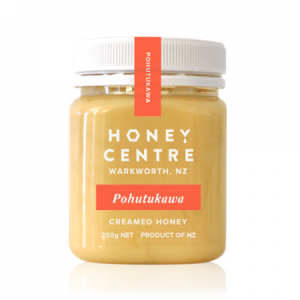
Pōhutukawa honey
Pōhutukawa honey, harvested from the nectar of the iconic New Zealand Pōhutukawa tree (Metrosideros excelsa), is renowned for its mild, delicate flavor with subtle floral notes and a hint of sweetness. This honey typically has a pale, almost white color and a smooth, creamy texture.
The Pōhutukawa tree, often called the New Zealand Christmas tree due to its vibrant red flowers that bloom in December, can grow up to 20 meters tall and thrives in coastal areas. The tree’s flowers provide a rich nectar source for bees, contributing to the unique characteristics of the honey. Native to New Zealand, the Pōhutukawa tree holds cultural significance for the Māori people and plays a vital role in coastal ecosystems by stabilizing shorelines and supporting local wildlife.
Harvested sustainably during the flowering season, this honey reflects New Zealand’s natural beauty and environmental stewardship. Its mild flavor makes it versatile in culinary uses, perfect for sweetening beverages, enhancing desserts, and adding a touch of natural sweetness to various dishes.

Rewarewa honey
Rewarewa honey, derived from the nectar of the native New Zealand Rewarewa tree (Knightia excelsa), is celebrated for its robust, slightly malty flavor with hints of caramel and toffee. This honey is distinguished by its deep amber or reddish-brown color and smooth, moderately viscous texture.
The Rewarewa tree, which can grow up to 30 meters tall, features narrow, serrated leaves and distinctive red to red-orange tubular flowers that bloom from late spring to early summer, providing a rich nectar source for bees.
Culturally significant to the Māori people, Rewarewa honey is harvested sustainably, reflecting its deep connection to New Zealand’s natural heritage. Its bold flavor makes it versatile in culinary applications, ideal for sweetening beverages, pairing with cheeses and desserts, and enhancing marinades and dressings.
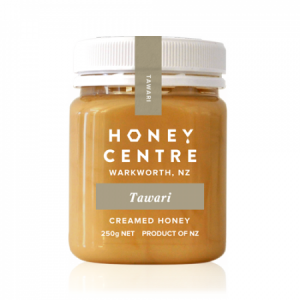
Tawari honey
Tawari honey, derived from the nectar of the Tawari tree (Ixerba brexioides) native to New Zealand, is highly valued for its unique and delicate flavor profile. This honey has a light, buttery taste with subtle hints of butterscotch, making it a favorite among honey enthusiasts. The color of Tawari honey ranges from pale amber to a rich golden hue, and its texture is smooth and creamy, enhancing its appeal.
The Tawari tree, which can reach heights of up to 10 meters, is notable for its glossy, dark green leaves and clusters of large, creamy-white flowers that bloom from late spring to early summer. These flowers are highly attractive to bees, providing the essential nectar that gives Tawari honey its distinctive characteristics. Found in the native forests of New Zealand’s North Island, the Tawari tree contributes to the biodiversity and ecological health of its habitat.
Culturally significant to the Māori people, the Tawari tree and its honey are harvested with sustainable practices that respect the environment and ensure the preservation of this natural resource. In culinary applications, Tawari honey’s mild and buttery flavor makes it an excellent choice for sweetening beverages, drizzling over desserts, pairing with cheeses, and incorporating into baking recipes.

Clover honey
Clover honey, one of the most popular and widely recognized types of honey, is celebrated for its mild, sweet flavor and versatility in culinary applications. Derived from the nectar of clover flowers, predominantly white and red clover (Trifolium species), this honey typically has a light golden color and a smooth, runny texture.
Clover plants are widespread in temperate regions and are commonly found in meadows, pastures, and fields. The flowers, which bloom from spring to late summer, attract bees with their abundant nectar, making clover honey a readily available and highly favored variety.
This honey’s mild and pleasant taste makes it exceptionally versatile in the kitchen. It can be used as a natural sweetener for beverages like tea and coffee, drizzled over cereals, yogurt, and desserts, or incorporated into baking and cooking recipes. Its light flavor ensures that it enhances rather than overpowers the taste of other ingredients.
Produced through sustainable beekeeping practices, clover honey is a testament to the harmonious relationship between agriculture and nature. Beekeepers often place hives near clover fields to ensure a plentiful and consistent supply of this honey, reflecting the agricultural heritage and environmental stewardship of the regions where it is produced.

Native Bush honey
New Zealand Native Bush honey, a unique and multifaceted variety, is derived from the nectar of diverse native plants and trees in New Zealand’s pristine forests, including Kanuka, Manuka, Rewarewa, and Tawari. This honey boasts a complex and robust flavor profile with earthy, slightly spicy, and mildly sweet notes, while its texture ranges from smooth and creamy to slightly granulated. The color of Native Bush honey can vary from light amber to dark brown, reflecting its diverse nectar sources.
Produced through sustainable beekeeping practices, it preserves the natural environment and supports biodiversity. Native Bush honey also holds cultural significance for the Māori people, adding to its heritage value. Versatile in culinary applications, it can sweeten beverages, enhance desserts, complement cheeses, and enrich marinades and dressings.
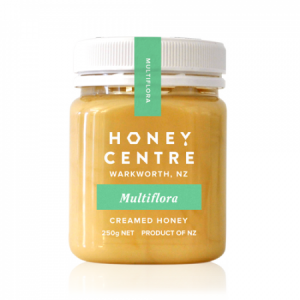
Multi-flora honey
New Zealand Multi-flora honey is a prized blend that captures the essence of the country’s diverse natural landscapes. Sourced from a variety of native and introduced flowering plants across New Zealand, this honey boasts a complex flavor profile that ranges from delicate and floral to robust and tangy. Its color can vary from light amber to deeper shades of brown, reflecting the rich tapestry of flowers visited by bees during the nectar-collecting season.
Harvested sustainably, this honey underscores New Zealand’s commitment to environmental stewardship and biodiversity conservation. In culinary applications, it serves as a versatile sweetener for beverages, enhances the flavor of foods from breakfast to dinner, and adds a unique depth to both sweet and savory dishes.
New Zealand Multi-flora honey not only delights the taste buds but also embodies the natural beauty and ecological diversity that define New Zealand’s landscapes.
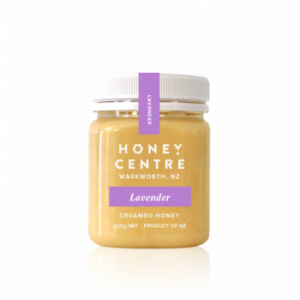
Lavender honey
New Zealand Lavender honey is a distinctive variety cherished for its delicate floral aroma and smooth, sweet flavor. This honey is produced by bees that gather nectar primarily from lavender (Lavandula angustifolia) flowers, known for their fragrant purple blooms. The resulting honey typically exhibits a light amber color and a creamy texture, making it easy to spread and enjoy.
Lavender honey is prized not only for its pleasant taste but also for its potential health benefits. The soothing aroma and flavor of lavender further enhance its appeal, making it a popular choice for both culinary and therapeutic uses.
Harvested sustainably in New Zealand’s favorable climate for lavender cultivation, this honey reflects the country’s commitment to quality and environmental stewardship. It is used as a natural sweetener in teas, desserts, and baked goods, and also complements cheeses and savory dishes with its subtle floral notes. New Zealand Lavender honey embodies the essence of the country’s pristine landscapes and biodiversity, offering a taste of pure floral delight and wellness benefits in every spoonful.
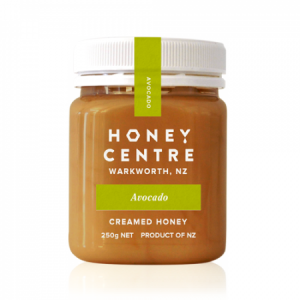
Avocado honey
New Zealand Avocado honey is a unique and sought-after variety known for its rich, buttery flavor and creamy texture. Produced by bees that forage primarily on avocado (Persea americana) flowers during the flowering season, this honey captures the essence of one of New Zealand’s significant horticultural crops. The honey typically has a light amber to golden color, reflecting the nectar’s origin from avocado blossoms.
Avocado honey is celebrated not only for its delicious taste but also for its potential health benefits. The honey’s buttery undertones complement its sweetness, making it a versatile addition to various culinary creations.
Harvested in regions where avocado trees thrive, such as Northland and the Bay of Plenty in New Zealand, Avocado honey reflects the country’s commitment to sustainable agriculture and beekeeping practices. Beekeepers strategically place hives near avocado orchards to ensure bees have ample access to the flowers without harming the crop’s pollination process.
In culinary applications, New Zealand Avocado honey adds depth and complexity to dishes. It can be used as a natural sweetener for beverages like tea and smoothies, drizzled over breakfast foods such as yogurt and pancakes, or incorporated into salad dressings and marinades. Its unique flavor profile and beneficial properties make it a prized addition to both gourmet kitchens and everyday meals, offering a taste of New Zealand’s natural bounty and agricultural richness in every spoonful.
